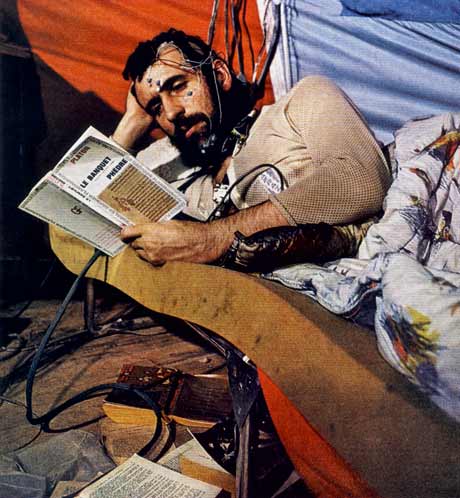Growing up in New York City, you would hear periodically about Kitty Genovese, a Queens resident brutally murdered as she screamed for help in earshot and view of her neighbors who did nothing to aid her. None of the dozens called the police. It was a horrifying story, repeated again and again, about a desensitized city full of unfeeling citizens, except that many of these “facts” were erroneous and the larger hypothesis was likely wrong.
There weren’t nearly that many witnesses to the visible portion of the crime, likely a half-dozen at most who understood what was happening. One neighbor briefly frightened away the attacker (who later returned), a couple called the police and another went to the victim and cradled her until the ambulance arrived. And as I was reminded recently when I read Adam Alter’s very worthwhile book, Drunk Tank Pink, subsequent psychological studies of strange non-reactions or limited reactions by numerous bystanders to distress isn’t necessarily a matter of apathy. The presence of so many eyewitnesses makes it less likely that any individual one will act. Everyone assumes somebody else will take care of things. Reaction is slowed and sometimes paralyzed by sheer numbers. It’s the “bystander effect.”
But it took many years for truth and good research to really challenge the narrative of the story, which had seemingly been written in stone and sold as a harrowing trend. How did it become so? One editor working in a high perch, A.M. Rosenthal of the New York Times, was largely responsible (or irresponsible). In a New Yorker review of just-published books about the murder, Nicholas Lemann reminds that a journalistic disregard for context and proportion can cause a random event to be mistaken for a sign of the times. An except:
“In 1964, Rosenthal was forty-one years old and relatively new on the job as the newspaper’s metropolitan editor, an important step in his ascent to a seventeen-year reign over the Times’ newsroom. Ten days after Genovese was killed, he went downtown to have lunch with New York City’s police commissioner, Michael Murphy. Murphy spent most of the lunch talking about how worried he was that the civil-rights movement, which was at its peak, would set off racial violence in New York, but toward the end Rosenthal asked him about a curious case, then being covered in the tabloids, in which two men had confessed to the same murder. He learned that one of the competing confessors, Winston Moseley, had definitely murdered a woman in Kew Gardens, Kitty Genovese. That killing had been reported at the time, including in a four-paragraph squib buried deep within the Times, but Murphy said that what had struck him about it was not the crime itself but the behavior of thirty-eight eyewitnesses. Over a grisly half hour of stabbing and screaming, Murphy said, none of them had called the police. Rosenthal assigned a reporter named Martin Gansberg to pursue the story from that angle. On March 27th, the Times ran a front-page story under a four-column headline:
37 WHO SAW MURDER DIDN’T CALL THE POLICE
Apathy at Stabbing of Queens Woman Shocks Inspector
The following day, the Times ran a reaction story in which a procession of experts offered explanations of what had happened, or said that it was inexplicable. From then on, the story—as they wouldn’t have said in 1964—went viral.”


